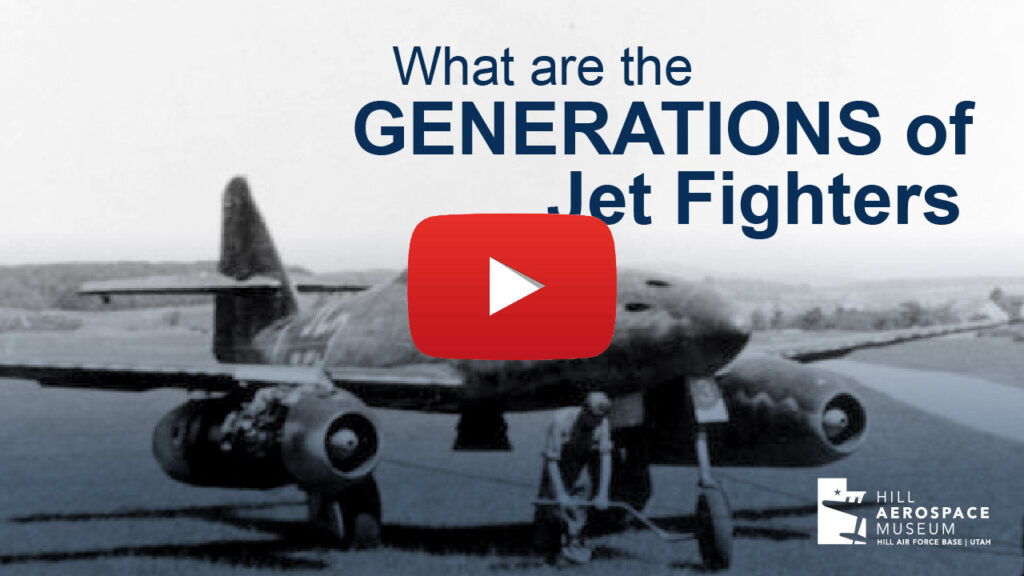Since the Wright Brothers took to the skies, the fighter jet has seen incredible advancements—first seeing combat in the skies over Europe in the final months of the Second World War. The transition from propeller to jet engines pushed the fighter jet to ever faster speeds and greater heights. As the jet has progressed, historians such as Dr. Richard P. Hallion, have come to define each ‘generation’ of aircraft by a varying set of characteristics and capabilities.
The First Generation of Jet Fighters
The Messerschmitt Me-262, a German aircraft, was the first operational jet fighter. Capable of reaching speeds of 560 mph, the Me-262 could outpace all Allied aircraft and cause havoc by engaging and disengaging using superior speed and acceleration. However, due to the production requirements of more high-end and exotic materials, the 262 never saw widespread use during World War II.
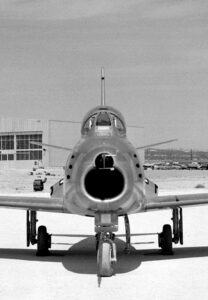 While there are several aircraft to compare in this generation, the North American F-86 Sabre took speed more seriously, traveling at 628 mph, carrying six .50-caliber machine guns and 2,000 pounds of assorted ordnance. The engine on this model received maintenance at Hill Air Force Base and was more powerful than previous engines, allowing the aircraft to begin approaching the speed of sound. During the Korean War, the Saber achieved fame with its superior ability to accomplish kills in comparison to the Soviet MiG-15, a similar model from the same generation.
While there are several aircraft to compare in this generation, the North American F-86 Sabre took speed more seriously, traveling at 628 mph, carrying six .50-caliber machine guns and 2,000 pounds of assorted ordnance. The engine on this model received maintenance at Hill Air Force Base and was more powerful than previous engines, allowing the aircraft to begin approaching the speed of sound. During the Korean War, the Saber achieved fame with its superior ability to accomplish kills in comparison to the Soviet MiG-15, a similar model from the same generation.
Second and Third Generations
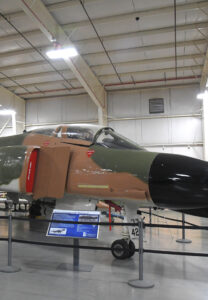 Jet aircraft speeds highlighted the need for technological advancement, such as the development of new weapon systems like air-to-air missiles, as aircraft speeds exceeded the sound barrier. Designers created more powerful engines capable of using afterburner, by adding additional fuel after combustion to increase speeds and push beyond the threshold of 700 mph. These design choices required aircraft with swept or delta wing designs to reduce drag and increase aerodynamics, and a lower emphasis on dogfighting due to extreme speeds and the capabilities of modern radar systems.
Jet aircraft speeds highlighted the need for technological advancement, such as the development of new weapon systems like air-to-air missiles, as aircraft speeds exceeded the sound barrier. Designers created more powerful engines capable of using afterburner, by adding additional fuel after combustion to increase speeds and push beyond the threshold of 700 mph. These design choices required aircraft with swept or delta wing designs to reduce drag and increase aerodynamics, and a lower emphasis on dogfighting due to extreme speeds and the capabilities of modern radar systems.
Manifestations of these specializations include century series aircraft like the F-104 Starfighter, a second-generation fighter which held records for speed, time to climb, and altitude, achieving 1,037 mph at 50,000 feet above the ground. In the third generation, the F-4 Phantom, supported by way of the Ogden Air Material Area on Hill Air Force Base in the 1960s with maintenance, overhaul and engineering, was the first fighter-interceptor able to identify, intercept and destroy any target that came into the range of its radar.
Fourth Generation
With the advent of more powerful engines, stronger building materials, more advanced avionics and better weaponry, the multi-role jet fighter entered into service. Capable of handling a multitude of mission parameters, from air superiority to ground attack, to electronic warfare, the fighter jet became the jack-of-all-trades in dominating the skies of modern battlefield.
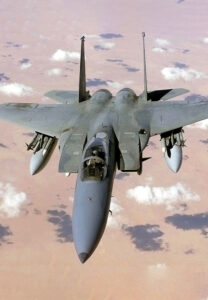 This generation includes the F-15 Eagle and the F-16 Fighting Falcon, both designed as lightweight, maneuverable fighter jets in the 1970s. The F-15’s engine thrust was the first to allow the aircraft to accelerate while in a vertical climb, though the F-16 excelled in high maneuverability and went on to become the “backbone of the United States Air Force” for three decades. Stationed at Hill Air Force Base, the 388th Tactical Fighter Wing was the first operational Active Duty wing to be equipped with the new aircraft. Not long after, the 419 Tactical Fighter Wing, stationed on Hill Air Force Base, became the first combat operational Reserve wing to fly this airframe. Personnel of Hill Air Force Base also began maintenance and overhaul on the F-16 in the 1970s, and these support functions still continue today.
This generation includes the F-15 Eagle and the F-16 Fighting Falcon, both designed as lightweight, maneuverable fighter jets in the 1970s. The F-15’s engine thrust was the first to allow the aircraft to accelerate while in a vertical climb, though the F-16 excelled in high maneuverability and went on to become the “backbone of the United States Air Force” for three decades. Stationed at Hill Air Force Base, the 388th Tactical Fighter Wing was the first operational Active Duty wing to be equipped with the new aircraft. Not long after, the 419 Tactical Fighter Wing, stationed on Hill Air Force Base, became the first combat operational Reserve wing to fly this airframe. Personnel of Hill Air Force Base also began maintenance and overhaul on the F-16 in the 1970s, and these support functions still continue today.
Fifth Generation
A fighter’s ability to target, engage and destroy an opponent is central to its role as a battlefield asset. But with the advent of computer-assisted design, exotic, radar-absorbent materials and advanced integrated avionics, the modern jet fighter subverted its basic premise. By avoiding an enemy’s radar – or its very eyes with which to engage – the fifth-generation fighter turned the world of air combat on its head. Capable of slipping into enemy territory, completing objectives and escaping without ever being seen, the modern battlefield has become a much deadlier game of cat and mouse.
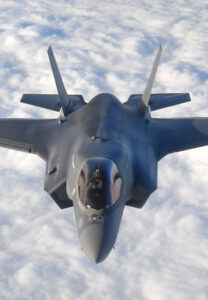 Today’s fifth-generation aircraft consist of the most advanced multirole fighters, which combine stealth, sensor fusion, and unprecedented situational awareness, including the Lockheed Martin F-22 Raptor and the Lockheed Martin F-35 Lightning II. F-22s were first employed by the United States Air Force in 2005, and Hill Air Force Base is the only Air Force depot for these advanced aircraft. The missions of the F-35 Lightning II also take up a significant portion of Hill’s support mission as the installation provides maintenance and repair for all variants and is home to the 388th Fighter Wing and 419th Fighter Wing.
Today’s fifth-generation aircraft consist of the most advanced multirole fighters, which combine stealth, sensor fusion, and unprecedented situational awareness, including the Lockheed Martin F-22 Raptor and the Lockheed Martin F-35 Lightning II. F-22s were first employed by the United States Air Force in 2005, and Hill Air Force Base is the only Air Force depot for these advanced aircraft. The missions of the F-35 Lightning II also take up a significant portion of Hill’s support mission as the installation provides maintenance and repair for all variants and is home to the 388th Fighter Wing and 419th Fighter Wing.
The Active Duty 388th and Reserve 419th were the first combat operational units in the Air Force to use this new weapon system starting with the F-35A in 2015. They would go on to deploy with the F-35 to Europe in 2017, to the Middle East in 2019 and 2020, and then to Spangdahlem Air Base, Germany, in 2022. From February to May of 2022, the group flew air patrol missions in Germany, Lithuania, Romania, Estonia, and Bulgaria along NATO borders with Ukraine.
Sixth Generation and Beyond
The proliferation of unmanned aerial vehicles, integrated radar systems, hypersonic missiles and skyrocketing development costs have all coalesced to challenge the modern fighter aircraft. These developments have led the U.S. Air Force and U.S. Navy to create the Next Generation Air Dominance initiatives for their individual branches. Potential developers are tasked with presenting an aircraft capable of taking on tomorrow’s unknown challenges. Both programs acknowledge the necessity for either manned, or unmanned piloting, as well as potential integration within a larger, local air-wing of drones and a wider, networked battle force.
In a single short century, the fighter aircraft has evolved from the humble, propeller driven bi-planes of the First World War to the super-cruise capable, stealth F-22 Raptor that patrols the skies today. This trend will continue, as the frontline fighter of tomorrow adapts and excels in an ever evolving battlefield.

